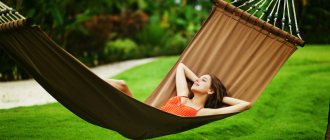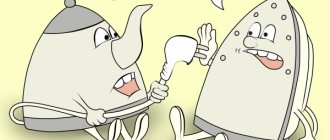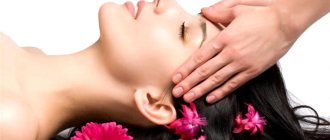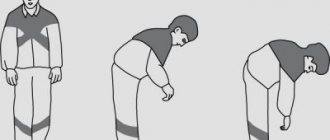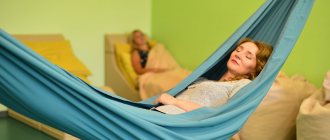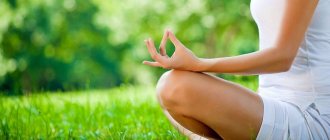Relaxation techniques. Every day we are faced with stressors and negative emotions. We deal with them in our own way and move on. However, our body does not forget about this. He accumulates, stores and cannot get rid of all this without effective help.
"Calm down". Raise your hands those who really find this wording reassuring. It does not have a calming effect on us. After all, we experience many stressors every day—personal, professional, parental, and informational. And although stress in itself is not a negative feeling - since prehistoric times it increases our alertness, mobilizes us and helps us survive - its excess can be harmful.
Introduction
“People who know how to relax not only have greater mental flexibility, but are also better able to deal with stress.”
R. Copelan
Hello, dear friend! You've probably heard about such a phenomenon as relaxation. Many people underestimate and underestimate this very effective technique for gaining health. But in vain! I pay a lot of attention to HER, because... Relaxation is the basis for your own development, be it the development of personal qualities, the cure of serious illnesses, or the development of intuition.
For me personally, relaxation is a very important tool in the life of a modern person, which is filled with physical and mental tension, as well as such a common phenomenon as stress.
You may be surprised, but I mastered many relaxation techniques at an early age, and the word “meditation” became a staple in my vocabulary. And for this I am grateful to my parents, who gave me a good upbringing, based on which I followed the path of self-development and improvement.
Thank you Mom and Dad, you are my best teachers and friends!
Why do psychosomatic diseases occur?
Why do such diseases occur (according to some researchers, up to 80% of patients in medical institutions can be classified as psychosomatic patients)? What drives people to the point of needing treatment is inattention to feelings or misunderstanding of them. Body psychotherapy implies that the mutual alienation of people is due to the alienation of a person from his own body and emotions.
One thing is characteristic of all people suffering from psychosomatic diseases: they do not know how, they are not taught to put their feelings into words and express them out loud. Psychotherapy teaches a person to recognize and express the fullness of his feelings, and not to repress them with bodily suffering.
What is relaxation
“Walk very slowly and take each step very consciously.”
Siddhartha Gautama Buddha
Relaxation, as a special method of relaxation, appeared abroad in the 30-40s of the 20th century, and was aimed at relieving muscle and nervous tension using specially selected techniques. But relaxation itself, as a technique, appeared a long time ago, but came to the West later. With the development of body-oriented psychotherapy, other relaxation methods also developed. And the method of muscle relaxation is historically and still is the main one.
But much attention to relaxation techniques has increased only since the second half of the 20th century, when the pace of life sharply increased in developed countries. And this is not surprising, because... people have become more susceptible to the destructive effects of psychological stress.
Steps in Relaxation
The first step in relaxation is the body. At this moment, a person with his attention looks for all the “clamps” and tensions in the body, consciously relaxing them.
The second step is to relax the mind. Many people start out crazy and end up not succeeding. The mind can only be relaxed when the body is relaxed.
When you manage to relax your body and mind, relaxation of feelings, emotions, and heart begins. But this process can no longer be controlled; it comes on its own when a person is ready for it. And a state of complete emotional calm will come only when a person learns to control the flow of negative thoughts.
The final result of relaxation is complete relaxation. This is the moment when a person “ceases to exist.” OSHO compared this state with the moment of realization of enlightenment, Christ consciousness. And such relaxation brings the greatest joy, full of bliss.
Personal transformation is only possible when you realize that your body and your mind are tense. Realizing this is the first step towards change. A state of relaxation (or a state without tension) should become your essence. Many modern experts in this field treat relaxation as some kind of “technical” skill that needs to be performed while lying on a surface. But complete relaxation is something more.
It should be present in all areas of life, and not just “in bed” or “on the couch.”
Relaxation without awareness of your body is not relaxation, but only its “technical” part. Frederick Perls's book “Workshop on Gestalt Therapy” describes in great detail experiments on awareness of one's body and one's habits. I really liked one of the experiments where students were asked to chew a piece of food thoroughly. And only swallow it when it is liquid enough to drink. I recommend you try it too! The essence of this experiment is the feeling of being present in action. Usually, when we eat, we don’t eat, we do everything we can (watch TV, read a book, listen to the news, etc.), but we don’t eat. This experiment is precisely aimed at fully realizing this action.
Self-massage
You probably already know how much a professional massage at a spa or health club can help reduce stress, relieve pain and relieve muscle tension. Almost the same can be achieved at home or at work by practicing self-massage or exchanging massages with a loved one.
Try taking a few minutes to massage yourself at your desk between tasks, on the couch at the end of a busy day, or in bed to unwind before bed. To enhance relaxation, you can use a scented oil, a scented lotion, or combine it with mindfulness or deep breathing techniques.
Quick self-massage to relieve stress
A combination of blows and strokes works well to relieve muscle tension. Try cutting gently with the edge of your palms, tapping with your fingers or cupped palms. Apply pressure to the muscle knots with your fingertips. Stretch your muscles and try long, easy, smooth movements. You can deliver these blows to any part of the body that is easily within your reach.
- Start by kneading the muscles in the back of your neck and shoulders. Massage the left side with your left hand, and the right side with your right, then change hands. Massage with the edge of your palm. Then gradually move up to the head with stroking movements.
- Go down your back as far as you can and make circular movements with your palm.
- Now gently massage your forearms and stroke your hands to your fingertips. Gently massage your forearms with the edge of your palm.
- Then massage your body and legs using circular movements.
- Rub your feet and calf muscles.
- Make a fist and make a circular motion, then lightly drum your fist up and down the sides and back of your neck. Swing 3-5 cm.
- Then use your thumbs to draw small circles around the base of the skull. Slowly massage the rest of your scalp with your fingertips.
- Then tap your fingers on the scalp in small, jerky movements, moving from front to back and then to the sides. Finger swing 1-2 cm.
- Now gently massage your face. Make a series of tiny circles with your thumbs or the tips of all your fingers.
- Pay special attention to your temples, forehead and jaw muscles.
- Use your middle fingers to massage the bridge of your nose and move along your eyebrows to your temples.
Finally, close your eyes. Lightly cover your face with your palms and briefly inhale and exhale lightly. The exercise is designed for light muscle relaxation and 10-15 minutes of time. This simple relaxation method helps almost everyone get back to normal.
Quick self-massage of the head
A head massage can induce relaxation in a few minutes. If you have long hair, then you should let it down or gather it into a loose bun at the back of your head.
- We start by stroking the neck towards the head.
- We place our hands at the end of the spine, in the hole, and with gentle circular massage movements with both hands we move to the forehead and back to the neck.
- Then we start doing it a little to the left and move towards the forehead and back
- Then one more time, even further to the left.
- Then we move to the right side of the head and repeat.
- A little near the scalp, paying special attention to the temples.
- Then slowly, carefully, with small jerky movements of the fingers, we hit ourselves for about 1 minute on the scalp and forehead in different places. Not with your hand! and with the pads of the fingers. The swing is 1-2 cm, no more.
- After this, we make several movements similar to smoothing the hair on the head, starting from the forehead and ending at the beginning of the neck.
- On the face: from the forehead downward, we make several movements similar to washing.
The exercise relieves fatigue very quickly; if you need to do it in 3 minutes, this is what you need. And in the morning it invigorates, better than a cup of good ground coffee, enhances attention, concentration and learning ability.
It is better to practice relaxation techniques with your eyes closed, but first learn how to do it correctly, not everyone can do it right away. Especially when you do it alone and there is no one to control you.
Benefits of relaxation
“Hell is when you are all tense, and heaven is when you are relaxed. Complete relaxation is heaven.”
OSHO
Relaxation is an effective means of combating stress and psychosomatic diseases, and also provides a general healing effect. It is used not only in psychotherapy, but in many healing systems, in Buddhism, yoga, wushu, and is also the most important stage of entering a meditative trance.
So, what are the benefits of the relaxation process:
- Muscle tension, accompanied by pain and stiffness of movement, is relieved.
- The energy balance in the body is restored.
- The circulation of lymph and blood improves.
- All organs are enriched with oxygen.
- All body functions are normalized (digestive, respiratory, metabolic.)
- Psycho-emotional balance is restored.
- The consequences of stressful situations are eliminated.
- Chronic tension is eliminated
- The body gets proper rest
- Hidden reserves for self-healing are launched.
And I am sure that this is not a complete list and it can be continued indefinitely. Based on the above, we can conclude that relaxation promotes effective mental activity and the discovery of talents and abilities. Increases productivity and activity.
Have you ever felt the urge to practice relaxation right now? J
Excessive stress harms the body
Stressful situations provoke increased production of adrenaline and cortisol in the body, and their constantly elevated levels in the blood debilitate the body and cause many health problems: insomnia, heart disease, autoimmune diseases, mental disorders and even cancer.
Stress, which we inherited from our ancestors, causes tension throughout the body. The ancestors relieved tension by force. The culture no longer allows us to do this. As a result, we live in a state of constant tension. Yes, we relax in our own way, but often such relaxation is ineffective.
Types and techniques of relaxation
“Why are you like a bundle of nerves? Relax!!!"
Men in Black
There are many techniques, techniques and methods aimed at relieving tension and entering a state of relaxation. Conventionally, we can distinguish several main types of relaxation:
- By time (long-term, occurring during sleep and short-term, which is subsequently replaced by stress).
- According to the method of execution (muscular and figurative).
- By origin (natural, occurring after physical exertion and purposefully caused, created under artificial conditions).
- By depth (superficial and deep).
- According to the speed of occurrence (emergency and prolonged).
- By the scale of impact (total and local).
There are a lot of types, isn't it? But there are many techniques. Let's look at the main ones:
- Psychophysiological relaxation technique. In this technique, muscle relaxation occurs through mental work and physical exercise. It is important to observe the following conditions: absence of bright light, comfortable temperature, loose clothing, absence of noise and other external irritants. It is not advisable to practice relaxation on a full stomach, because... the digestion process interferes with relaxation.
- Progressive muscle relaxation. This technique is considered one of the most effective techniques and was developed by American scientist and physician Edmund Jacobson in the 1920s. The principle of the technique is very simple: in order to achieve deep relaxation of all muscles, you need to strongly tense all these muscles simultaneously or sequentially.
- Abdominal breathing. This method is considered one of the simplest. It is performed as follows: inhale slowly through the nose (you need to breathe with the diaphragm, not the chest), hold for a few seconds. Exhale slowly through your mouth. The exhalation should be twice as long as the inhalation.
- Self-hypnosis. Relaxation is achieved by repeating a suggestive phrase, for example: “The toes of my left foot are completely relaxed.”
- Medicinal relaxation. It is achieved through the use of special medications – muscle relaxants.
- Physiotherapy. Warm baths and gentle massage promote muscle relaxation.
LiveInternetLiveInternet
The ability to relax at will is a very important skill that everyone should have. Life in the modern world is very stressful and stressful, both mentally and physically. This includes workers in the technology and computer industries who sit for hours in front of a computer screen, resulting in hours of strain on certain muscles and joints.
This also applies to other workers, for example those who spend a lot of time driving, especially in heavy traffic, which puts a lot of pressure on the psyche. These days, stress is a very common word as people blame stress for many of their problems. People find it difficult to relax. This article contains five of the best ways for healthy relaxation.
Relaxation Technique 1: Breathe to relax and calm down
Breathing control is a fundamental skill needed to quickly calm down and relax. By consciously controlling your breathing, you can temporarily distract yourself from stressful thoughts. Some breathing techniques provide a quick calming effect.
I suggest the following breathing exercise:
- If possible, lie down or sit comfortably.
- Close your eyes and focus your attention on your nostrils as air enters them.
- Take a slow, deep breath through your nose. Please note that the air entering the nose is cold.
- Hold your breath for a few seconds, keeping your attention at the same point.
- Exhale slowly and calmly through your nose. Notice that the air leaving the nostrils is already warm.
- Practice for a few minutes until your disturbing thoughts go away and you feel calm.
This exercise uses several techniques to calm you down:
- Closed eyes and a comfortable position are already a little relaxing.
- When you breathe slowly and hold before exhaling, your heart rate decreases. This is especially useful if you are agitated for any reason and need to calm down quickly. In stressful situations, you can perform this exercise without a preparatory stage, if there is no time or place for this.
- Concentrating on the movement of cold and warm air through the nostrils occupies the brain and distracts you from other, negative thoughts.
However, it is even easier to improve your breathing and cope with stress and negative experiences. You need to slowly draw air into your lungs, then hold the air, slowly counting to four. In the same way, exhale for four counts and hold your breath again for four counts without inhaling.
With this breathing practice you can kill two birds with one stone. First, willy-nilly, force yourself to breathe slowly and avoid hyperventilation. Secondly, distract the excited mind from the problem that caused a violent reaction and switch it to counting from one to four.
Relaxation Technique 2: Progressive Muscle Relaxation (Jackopson)
Progressive muscle relaxation is the simplest technique from which many more complex relaxation techniques have emerged. The progressive relaxation system is named after Harvard physiologist Edmund Jacobson. It is based on the fact that after strong tension the muscle automatically relaxes.
Before you start doing the exercises, you need to take the most comfortable position in space for you. It is advisable that the position be sitting, since relaxing the neck muscles involves moving the head.
However, to relax according to Jacobson, you can lie on your back on a hard, flat surface, close your eyes and select an object: to begin with, a small group of muscles - for example, calves, abdominals, hands. This group must first be strongly tensed (although in order to feel them), and then sharply relaxed - and completely feel this relaxation.
The number of muscles involved in relaxation must be gradually increased. Classic progressive relaxation scheme: sequential movement (tension-relaxation) from the neck muscles to the muscles of the tips of the legs.
When performing the exercise, do not strain your muscles too much, and do not strain muscles that do not belong to the specific group mentioned in this step. After tension relaxation, the muscles should be more relaxed than before the tension.
Sit comfortably in a chair or lie down. Take a few slow breaths in and out. Then start in the following sequence.
1. Hands. The first exercise is aimed at relaxing the arm muscles. This is a simple clenching of the hand into a fist. The exercise must be repeated 5 times. Do not forget that any pain, including that received as a result of the exercise, can have nothing to do with relaxation. After the task is completed, shift the focus of your attention to the sensations in your hand. You may not notice anything special the first time. This is normal, because for so long you have not paid attention to what is happening in your body. Except for the pain, of course.
* After 4 days, you add the following exercise: spread your fingers on your hand to such an extent that you feel tension. Yes, it should be just tension, NO pain. In this exercise, if you look at it from above it resembles an asterisk.
* Next exercise: tense the hand, bringing the palm towards the body. So that the hand and wrist form a right angle. Fingers pointing up.
*The exercise is similar to the previous one, only in this case the fingers point down.
2. Biceps and triceps. Next, bend the arm at the elbow joint, tensing the muscles of the forearm. Biceps are tense (tighten the muscle, but shake your hands to make sure they are not clenched into fists); relaxed (put your hands on the chair).
* We do the exercises in reverse: we try to straighten the arm as much as possible to feel the tension in the triceps.
3. Shoulders. Shrug your shoulders and keep them as tense as possible and still comfortable for you. Pull your shoulders back (gently); relax. Push them forward (push); relax.
4. Neck (lateral muscles). We work the neck muscles. Shoulders are straight, relaxed, slowly turn your head to the right as far as possible; relax. Turn left; relax.
*Neck (back muscles). We throw our head forward, pressing our chin to our chest. We keep our muscles tense. Relax.
*Neck (front muscles) Smoothly tilt your head back. We repeat the exercise 5 times. We concentrate on the sensations occurring in your muscles.
If you conscientiously approached the development of the technique and practiced it for at least 15 minutes a day, at this stage you will already be closer to high-quality relaxation of your body. This occurs due to the generalizing function of our brain. Good relaxation of the arm muscles for 10 minutes leads to the spread of relaxation throughout the body.
5. Breathing. Inhale as deeply as possible - and then a little more; exhale and breathe normally for 15 seconds. Let all the air out of your lungs - and then some more; inhale and breathe normally for 15 seconds.
6. Back. Press your shoulders against the back of the chair and push your body forward so that your back is arched; relax. Do this exercise with caution or not at all.
7. Buttocks. Squeeze your buttocks tightly and lift your pelvis off the seat; relax. Press your buttocks into the chair; relax.
8. Hips. Stretch your legs and lift them 15 cm from the floor or footrest, but do not tense your abdominal muscles; relax. Press your feet (heels) into the floor or footrest; relax.
9. Belly. Pull your stomach in as much as possible; relax completely. Puff out your stomach or tense your muscles as if you are preparing for a blow; relax.
10. Calves and feet. Lift your toes (without lifting your legs); relax. Raise your feet as high as possible (beware of cramps - if they occur, or you feel them approaching, shake your feet); relax.
11. Toes. Relax your legs, press your toes to the floor; relax. Raise your toes as high as possible; relax.
12. Face. Relaxation of the facial muscles completes the set of exercises.
* Mouth. The mouth is open as wide as possible; relaxed. The lips are brought together and compressed as tightly as possible; relaxed.
* Tongue (protruded and retracted). Open your mouth and stick out your tongue as far as possible; relax (let it lie freely on the bottom of the mouth). Pull it back into your larynx as deeply as possible; relax.
* Tongue (palate and bottom). Press your tongue to the roof of your mouth; relax. Press it to the bottom of the mouth; relax.
*Eyes. Open your eyes as wide as possible and feel the tension in the frontal muscles, wrinkle your eyebrows; relax.
* Close your eyes as best you can without disturbing your comfort. This will allow you to contract a large number of periocular muscles.; relax. Make sure you completely relax the muscles in your eyes, forehead and nose after each strain.
* The last exercise tones the lower part of the face. We imagine that we really want to kiss someone - we stretch our lips into a tube.
You must understand that mastering this method will require you, first of all, to be regular. The order of the exercises matters; they should be mastered in the prescribed order.
The period of familiarization with each subsequent exercise should be at least 4 days. This means that on the first training day you only do one exercise. After 4 days, add another one and so on. This is done with the aim of training muscle memory, which, as Jacobson’s relaxation is mastered, will over time automatically “turn on relaxation” when performing at least one exercise. To obtain such a result, you will need about 3 months, but it should be noted that with regular implementation of the complex, you will receive tangible results within a few weeks.
Important: Remember that a state of relaxation cannot occur in the presence of pain. Therefore, you should be careful and not overdo it when doing the exercises.
Disadvantages of Jacobson's progressive relaxation system: it takes a long time and can only work in a quiet environment where you can lie down and practice relaxation along with deep breathing. A person in standard working conditions has few such opportunities, so there are more adapted techniques.
Relaxation Technique 3: Calming Visualization
Visualization is a powerful tool of consciousness. Studies have shown that the subconscious cannot distinguish real events from visualized ones. Therefore, visualized images have a significant impact on consciousness.
- Sit comfortably or lie down. Close your eyes and take a few slow breaths. Turn off all communications to avoid distractions.
- Imagine yourself in a quiet and peaceful place of your choice. This could be a deserted beach, a flowery meadow, a forest, a boat, or any other place where you feel relaxed.
- Hold this image and, experiencing the bliss of the moment, imagine all the positive feelings that arise in this place.
- The more realistic the image, the more positive emotions you will receive.
- When you feel comfortable and calm, slowly exit the imaginary world and return to the real one.
Relaxation Technique 4: Alpha and Theta Stimulation Using Audio Programs
The human brain functions in different states of consciousness and attention. The different levels are distinguished by the frequency of the brain waves, as can be seen in the EEG (electroencephalogram). These levels are named after the letters of the Greek alphabet.
The general agreement regarding brain wave patterns is as follows:
- Beta – 14 Hz and higher. A state of readiness, an active state of the brain. Associated with thinking and wakefulness.
- Alpha – from 8 to 14 Hz. Relaxed state of the brain. Associated with immersion in dreams and general relaxation.
- Theta – from 4 to 8 Hz. A state of deeper relaxation. Light sleep. Hypnosis. Meditation.
- Delta – below 4 Hz. Deep dream. Unconscious state.
The alpha state is recognized as the healthiest brain state as it is associated with relaxed brain activity. This state is also used as the basis for advanced mind control techniques such as meditation, the Jose Silva method, and others.
You can stimulate the alpha wave activity of the brain using special audio recordings, the effect of binaural beats, to directly influence the brain and force it to work at the desired frequency. To reduce stress, binaural beats are layered over the sounds of falling rain, which in themselves have a calming effect.
There are many relaxation recordings available online, such as Reiki Healing Music.
Relaxation Technique 5: Entering the Alpha State of Consciousness on Your Own
You can learn to enter the alpha state of consciousness on your own, without using special audio recordings. Of course, there will be a learning curve, but you will be able to control your brain better. José Silva has dedicated his life to developing technology to better harness human potential. His work is based on the ability to enter and remain in the alpha state of consciousness.
There are several ways to stimulate the alpha state. Here's the way that works best for me:
- Sit comfortably or lie down with your eyes closed. Take a few deep breaths.
- Imagine the number 3 and say “Three”
three times. - Imagine the number 2 and say “Two”
three times. - Imagine the number 1 and say “One”
three times. - Imagine the number 10 and say “I am relaxing
. - Imagine the number 9 and say “I calm down
. - Imagine the number 8 and say “I am becoming more and more relaxed
. - Imagine the number 7 and say “I am becoming more and more calm
. - Imagine the number 6 and say “My mind is clear and serene
. - Imagine the number 5 and say “My whole body is relaxed
. - Imagine the number 4 and say, “I’m so relaxed that I can’t feel my own body weight
. - Imagine the number 3 and say “I am completely calm
. - Imagine the number 2 and say “I am completely relaxed
. - Imagine the number 1 and say “I am completely calm and completely relaxed.
I'm in alpha .
Based on materials from https://irudko.ru, https://bigideas.ru
See also:
How to stay calm in difficult situations
Strong relaxation program - 12 minutes of nirvana
Elements of life that can and should be simplified
Myths about relaxation
“If you relax, they will start using you. Therefore, we must stand aside from what is happening. But where is this side and how to stand in it?
Gia ( GIA)
MYTH 1
Relaxation is a natural state that anyone can enter without prior preparation. This is wrong. If you come home after a hard day, lie down on the sofa and consider this relaxation, you will be wrong. Relaxation involves comprehensive deep relaxation of the mind and body. If, having relaxed your body, you carefully think about the events of the day and make plans for the future, this will not allow you to truly relax, restore strength and harmonize all processes in the body.
MYTH 2
Relaxation is relaxation of the body. This is not entirely true. Relaxation of the body is included in the concept of “relaxation”, but is not equivalent to it. High-quality relaxation with an obvious effect is possible only with complete relaxation of not only the body, but also the mind. Clearing the mind by reducing and even stopping mental chatter is a prerequisite for deep relaxation.
MYTH 3
Relaxation is a necessary measure in special cases to relieve tension or the effects of stress. This is a misconception. Only regular relaxation will allow you to achieve the best physical and mental state.
Society
How can you blame someone for the fact that, while living in society, he completely followed its rules - after all, few people know how to adequately handle their emotions. Like everyone else, you were not even aware of the existence of any connection between emotional stress and illness. Therefore, your participation was almost certainly the result of unconscious beliefs and social norms of behavior.
The sources of pleasure are freedom of movement and lack of tension. The development of the capacity for pleasure is hindered by the influence of society, which requires people to neglect their primary needs, agreeing with social conventions and yielding to the needs of others.
Humans are social creatures whose survival depends on the joint and cooperative actions of the entire group. Restrictions on behavior that promote the welfare and prosperity of a group are not necessarily harmful or offensive to the individual within that group. The restrictions placed on feelings are a completely different matter. Since feelings constitute a person’s bodily life, assessing feelings as “good” or “bad” means assessing a given individual, and not his actions and deeds.
Fragrances for relaxation
“Learn to relax, if you are relaxed, you have the key to the imagination, if not, you will have to be content with the key to the intellect.”
Dennis Hopper
Since ancient times, people have known about the amazing properties of odors and used them in many areas of their lives. It's no secret that every day our sense of smell detects a huge number of different aromas. And they all affect our mood and well-being. A special role among odors that have a beneficial effect on the human body is given to incense (as essential oils were previously called).
Properly selected aromas can contribute to complete relaxation.
There is an ancient table for selecting essential oils to restore harmony. I will give some recommendations from it:
- For envy, moral “vampirism”, aggression: lemon balm, rose, juniper, lemon.
- Restoring human energy after overwork: basil, coriander, geranium, grapefruit, ginger, pine, lavender.
- Elimination of post-stress conditions and depression: bergamot, geranium, grapefruit, lemon balm, rose, lemon.
- Quick recovery from physical illnesses, injuries: fennel, pine, mint, rose, cinnamon.
- Strengthening determination and self-confidence: eucalyptus, lemongrass, tangerine, rosemary, thyme, yarrow, juniper, cloves.
- Joy in love, erotic: bergamot, ginger, jasmine, patchouli, rose, sandalwood, ylang-ylang, nutmeg, lavender.
- Preserving peace and warmth in the family: jasmine, tangerine, rose, vanilla, incense, orange, apple blossom.
Story
The idea of relaxation in psychology was popularized by Dr. Edmund Jacobson in his published book Progressive Relaxation
.
It was a technical book intended for doctors and scientists. His book describes simultaneously tensing and relaxing specific muscles to achieve overall body relaxation. Jacobson then published another book entitled You Should Relax,
published in 1934, which was aimed at the general public. According to Jacobson, his research began in 1908 at Harvard University, and later moved to Cornell and the University of Chicago. His research was aimed at improving general human well-being.
In 1932, Johannes Schulz and Wolfgang Lüth developed a relaxation method that emphasized the use of the power of suggestion, called autogenic training.
In 1975, Herbert Benson and Mirium Z. Klipper published a book called The Relaxation Response.
, which provides instructions for linking meditation techniques to everyday activities that the average person can perform.
Notes
- ↑
Jacobson, E. Progressive relaxation. — 2nd ed. — Chicago: University of Chicago Press, 1938. (English) - ↑ 12
Efficacy of abbreviated progressive muscle relaxation training: a quantitative review of behavioral medicine research (English) - ↑
Progressive Muscle Relaxation - ↑ 1 2 Capponi, V.;
Novak, T. My own psychologist. — 2nd ed. - St. Petersburg: Peter Press, 1996. - ISBN 5-88782-095-0. - ↑
Health Hint: Breathing Exercises - ↑
Relaxation Techniques for Health — At the National Institutes of Health (English)
Meditation
Herbert Benson, professor at Harvard University Medical School, in his book The Relaxation Response
proposed a body mechanism that counteracts
"hit" reactions
or run." The relaxation response lowers the body's metabolism, heart and breathing rates, blood pressure, muscle tension, and calms brain activity. It increases the immune response, aids attention and decision making, and modifies gene activity opposite to that associated with stress. The relaxation response is achieved through meditation. Benson's meditation technique includes four stages:
- Quiet environment to help you concentrate
- A mental device that helps maintain sustained attention (sound or word repeated over and over again)
- Have a positive attitude so you don't get discouraged by unsuccessful attempts.
- Comfortable position
Autogenics
Autogenics was invented by Dr. Johannes Heinrich Schulz in the 1920s. The process of autogenics is to deeply relax the muscles, and by doing so, the mind also relaxes. Autogenic training consists of six parts:
- Heaviness in body parts (arms and legs feel heavy)
- Warmth in parts of the body (arms and legs feel warm)
- Heartbeat (heart is calm)
- Breathing (breathing calmly)
- Warmth in the abdomen
- Cool forehead

